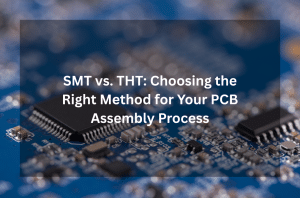Introduction:
Printed Circuit Board (PCB) assembly is a critical stage in the electronics manufacturing process. Achieving a seamless and efficient assembly requires a combination of best practices for PCB assembly and effective collaboration among various stakeholders. In this blog post, we will explore the key aspects of PCB assembly services, emphasizing the importance of PCB board design, and providing valuable tips for fostering collaboration in the process.
Understanding PCB Assembly:
PCB assembly services involve the process of populating a bare PCB with electronic components to create a functional and interconnected circuit. The components, ranging from resistors and capacitors to integrated circuits, are carefully soldered onto the PCB according to the circuit design. The success of this process greatly influences the overall performance, reliability, and longevity of electronic devices.
Best Practices for PCB Assembly:
1.Thorough PCB Board Design Review:
Before initiating the assembly process, a comprehensive review of the PCB Design is essential. This includes ensuring that the layout adheres to industry standards, the components are correctly placed, and there are no design flaws that could lead to assembly complications.
2.Quality Components:
Using high-quality components is paramount for the reliability of the final product. Manufacturers must source components from reputable suppliers to avoid issues such as counterfeit parts or components with inconsistent specifications.
3.Accurate Placement of Components
Precise placement of components is crucial for the functionality and performance of the PCB. Automated assembly machines are commonly used for accuracy, but human oversight is equally important to catch any discrepancies.
4.Soldering Techniques
Employing the right soldering techniques is fundamental to ensuring a robust connection between the components and the PCB. The industry standards for soldering, such as the IPC-A-610, should be followed to guarantee the quality of solder joints.
5.Thermal Management
Proper thermal management is essential, especially in devices with high power requirements. Adequate heat dissipation methods, such as heat sinks or fans, should be integrated into the design to prevent overheating and ensure long-term reliability.
6.Quality Control and Testing
Rigorous quality control measures, including visual inspections and functional testing, must be implemented at various stages of the assembly process. This helps identify and rectify any defects before the final product reaches the customer.
7.Documentation and Traceability
Maintaining detailed documentation throughout the assembly process is crucial for traceability and future troubleshooting. This includes records of component specifications, assembly procedures, and testing results.
Collaboration Tips for PCB Assembly:
Early Collaboration Between Design and Manufacturing Teams:
Foster collaboration between design and manufacturing teams from the early stages of product development, addressing potential manufacturing challenges
1.Clear Communication Channels
Establish clear communication channels between all stakeholders, including designers, engineers, and manufacturers, emphasizing the significance of an effective PCB board. Regular updates and open lines of communication contribute to a collaborative environment.
2.Prototype Testing
Building and testing prototypes can uncover unforeseen issues that may arise during the assembly process, emphasizing the need for a well-thought-out PCB board design. Early prototype testing allows for adjustments before mass production, saving time and resources.
3.Supplier Collaboration
Collaborate closely with component suppliers to ensure a stable supply chain, highlighting the importance of consistent PCB board design. This involves maintaining open communication and having contingency plans for unexpected disruptions.
4.Cross-Functional Training
Cross-training employees across different aspects of the PCB assembly process promotes a better understanding of the entire workflow, including the critical role of PCB board design. This knowledge exchange facilitates collaboration and effective problem-solving.
5.Continuous Improvement Culture
Establish a culture of continuous improvement within the organization, encouraging employees to provide feedback and suggestions for optimizing the PCB assembly process, including enhancements to PCB board design. This leads to increased efficiency and quality.
Conclusion:
Achieving successful PCB assembly requires a combination of best practices for PCB assembly and effective collaboration among design, engineering, and manufacturing teams. By adhering to industry standards, employing precise assembly techniques, and fostering open communication, organizations can enhance the reliability and performance of electronic devices. Embracing a collaborative mindset throughout the entire PCB assembly services process, including PCB board design, is key to overcoming challenges, reducing time-to-market, and ensuring the delivery of high-quality products to customers.

